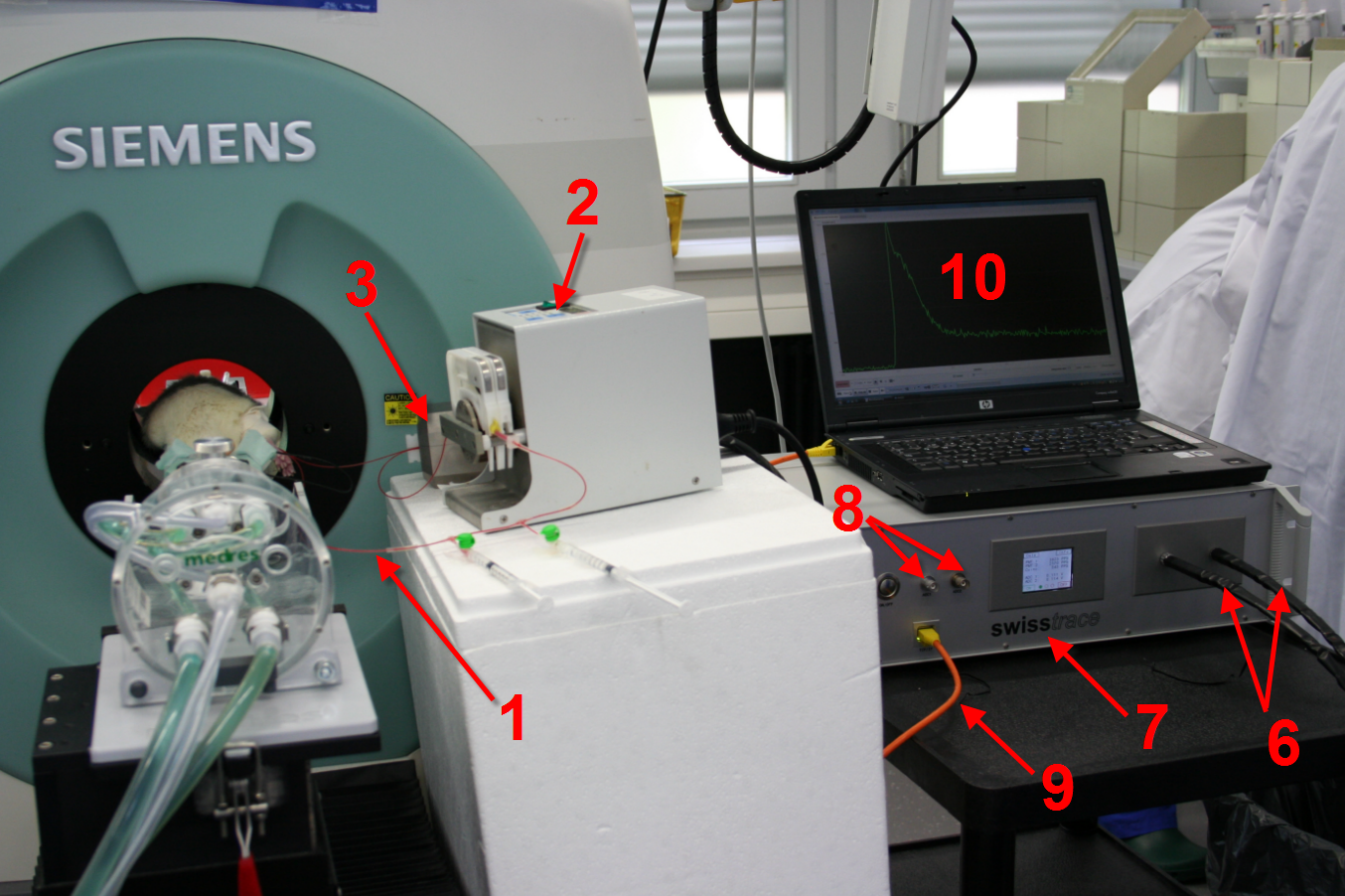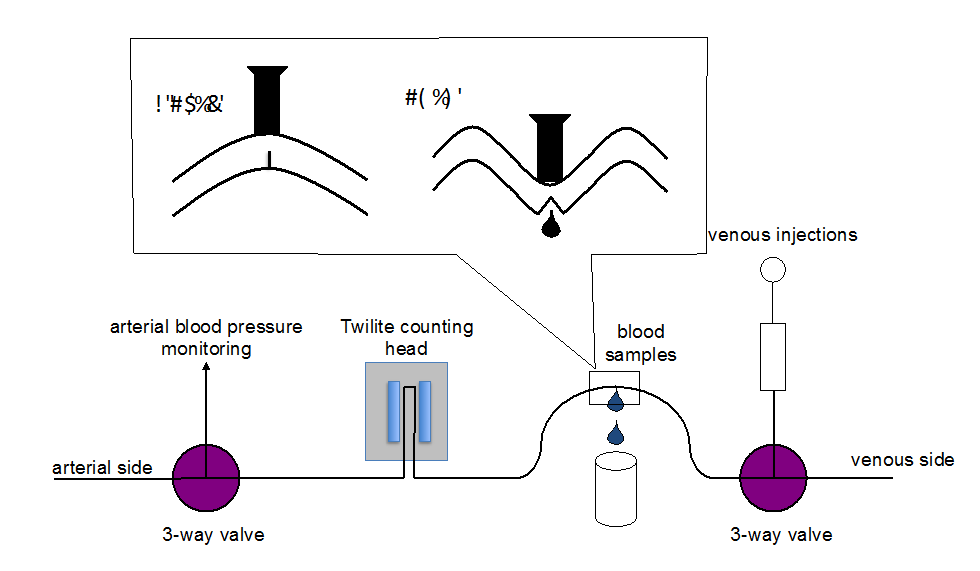The twilite measures the radioactivity in a catheter which runs between two LYSO crystals. In animals the best solution is to install a shunt between the femoral artery and the femoral vein. This allows to continuously measure the whole blood activity without any loss of blood. Such shunts can be placed in animals as small as a mouse, using catheters differing in size.
In humans, the withdrawn blood should not flow back into the body. One usually places a catheter into the radial artery, runs the catheter through the twilite measuring head and directs the blood into a waste container.
In humans the blood flow in the catheter is always controlled by a suitable peristaltic pump. In animals it is advisable to also control the blood flow in the shunt with a peristaltic pump. However, it is also possible to let the shunt run freely driven only by the arterio-venous pressure difference.
The appropriate catheter diameter differs according to the size of the animals. Swisstrace delivers templates for guiding the catheter through the measuring head for each catheter size, so that a well defined geometry is established. The characteristics of the shunt are described in a paper published by Weber and co-workers [1].
A typical setup of a quantitative rat PET experiment is illustrated below.

The twilite consists of the components 3-10. The catheters for the shunt and the peristaltic pump are not delivered by swisstrace.
The shunt can serve several additional functions, such as blood pressure monitoring, tracer injection as well as the collection of blood samples for metabolite analysis. The procedure illustrated below is recommended for collecting blood samples: a small cut is made into the catheter using a scalpel. In normal operation the catheter is bent upwards, so that the cut is closed and blood circulates. To obtain blood samples, the shunt is shortly pressed downward for opening the cut and blood drops can be collected with practically zero dead volume.
